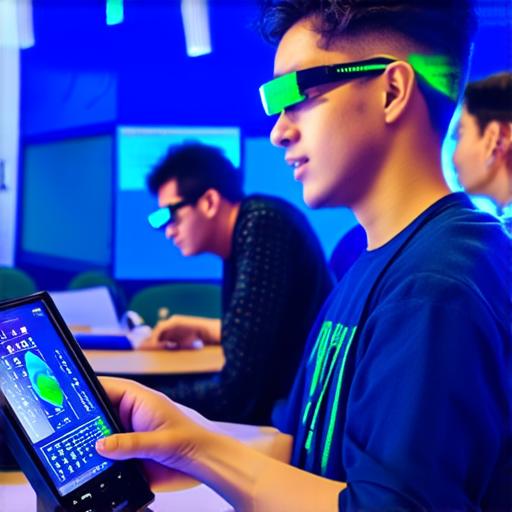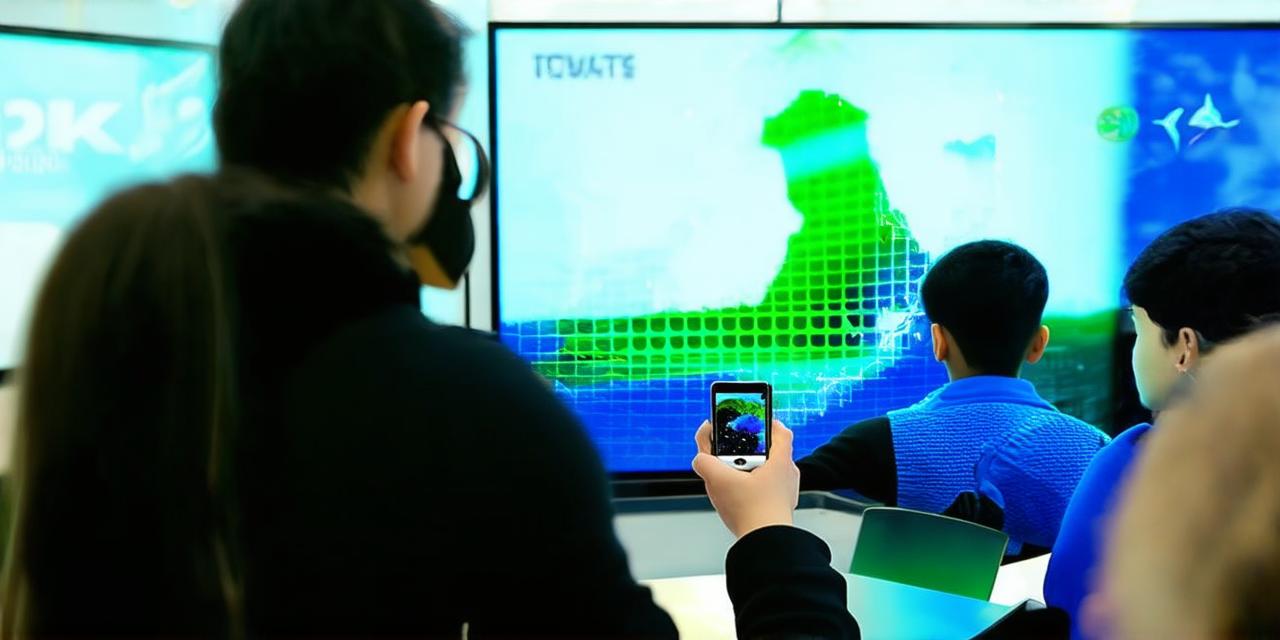Introduction:
Augmented reality (AR) is a technology that overlays digital information on top of the physical world. This innovative technology has the potential to revolutionize education by enhancing the learning experience and making it more interactive and engaging. In this article, we will explore some of the ways AR can be implemented in educational settings and the benefits it brings.
1. Enhanced Visualization:
One of the main advantages of AR is its ability to enhance visualization. By overlaying digital information on top of the physical world, students can get a better understanding of complex concepts. For example, AR can be used to teach science by allowing students to visualize the human body or explore the solar system.
2. Improved Engagement:
AR can also improve engagement in educational settings. By making learning more interactive and engaging, students are more likely to be motivated to learn. This can be achieved through gamification, where students compete against each other or complete challenges to earn points. AR can also be used to create virtual field trips, allowing students to explore new places without leaving the classroom.
3. Enhanced Collaboration:
AR can also enhance collaboration in educational settings. By allowing students to work together on projects in a virtual environment, they can collaborate more effectively and efficiently. This can be particularly useful for remote learning environments where students are not physically present in the same location.
4. Personalized Learning:

AR can also be used for personalized learning. By allowing students to learn at their own pace and in their own way, AR can help cater to individual learning styles. For example, students who prefer visual learning can use AR to explore complex concepts, while those who prefer auditory learning can listen to lectures using AR headsets.
5. Cost-Effective:
AR is also a cost-effective solution for educational settings. By reducing the need for physical resources and materials, schools and universities can save money on textbooks, equipment, and other materials. AR can also reduce the need for physical infrastructure, such as classrooms and laboratories, which can be expensive to build and maintain.
6. Case Studies:
There are many case studies that demonstrate the effectiveness of AR in educational settings. For example, a study conducted by researchers at the University of Maryland found that students who used AR to learn about biology were more engaged and had better recall of information than those who did not use AR. Another study conducted by researchers at the University of British Columbia found that AR can improve student performance in math by providing real-time feedback and allowing for immediate correction of errors.
7. Expert Opinions:
There are many experts in the field of education who believe that AR has the potential to revolutionize learning. For example, Dr. Michael Levine, a professor at the University of Colorado Boulder, believes that AR can help students learn more effectively by providing them with a more immersive and interactive learning experience. Similarly, Dr. David Rose, a professor at Harvard University, believes that AR can help make learning more personalized and effective by allowing students to learn at their own pace and in their own way.
8. Real-Life Examples:
There are many real-life examples of how AR is being used in educational settings. For example, the University of Maryland uses AR to teach biology, allowing students to explore the human body in a more immersive and interactive way. The University of British Columbia uses AR to teach math, providing real-time feedback and allowing for immediate correction of errors. The University of Illinois at Urbana-Champaign uses AR to teach geography, allowing students to explore different parts of the world in a virtual environment.
Summary:
In conclusion, augmented reality has the potential to revolutionize education by enhancing the learning experience and making it more interactive and engaging. By providing enhanced visualization, improving engagement, enhancing collaboration, personalized learning, cost-effectiveness, real-life examples, and expert opinions, AR can help make learning more effective and enjoyable for students of all ages. As AR technology continues to evolve, we can expect to see even more innovative ways in which it is used in educational settings.
